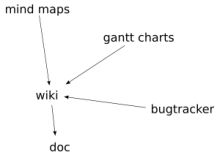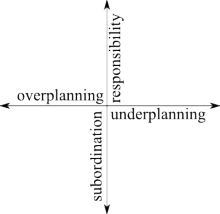The dual role of the middle management (do not underestimate the art of manipulating the boss)
There are three types of positions in an organizational hierarchy:
- Top management, the decision makers;
- middle management, those who detail and implement top management strategies, communicating execution plans to the people who do the real work that is,
- employees and workers.
Note that only the middle managers communicate both with the top management and with the employees and workers. In a traditional enterprise, the communication is oriented top-down, with middle management only detailing and passing on the orders.
In IT, as probably in the other hi-tech industries, bottom-up communication is of a paramount importance as the problems arrive unexpected and are sometimes not only difficult to overcome, but even difficult to explain. However, managers are still evaluated mostly on their abilities to manage subordinates, not on the ability to channel information to the top management, guiding and orienting corporate decision-making.
My brief manager's career ended partly because my company could not avoid the usual problems of software development, the problems that I knew about, could forecast, but was unable to mitigate as they arrived, mostly because I could not guide the much less knowledgeable boss through the minefield of decision-making without hurting his ego.
A manager that can not influence the decisions of the boss is only a half-manager, I now see clearly which half I was. Being aware of this handicap in advance could have helped me. Reading this post and applying it to your situation will probably help you.



